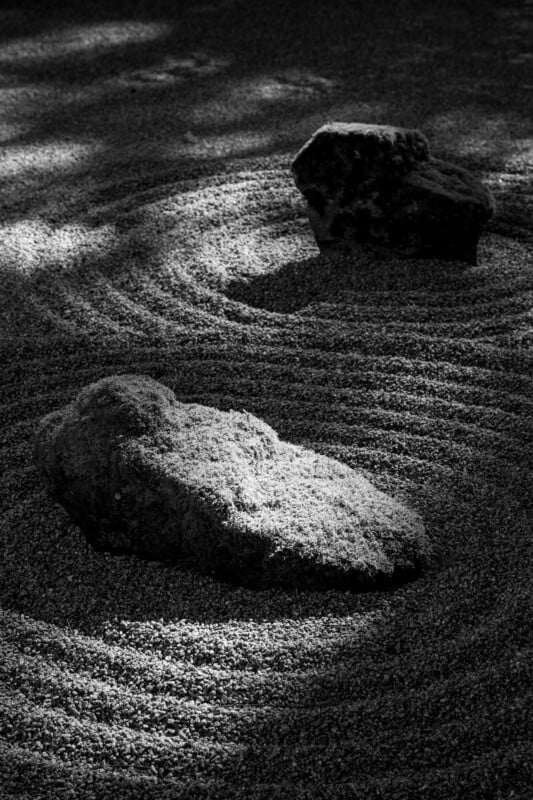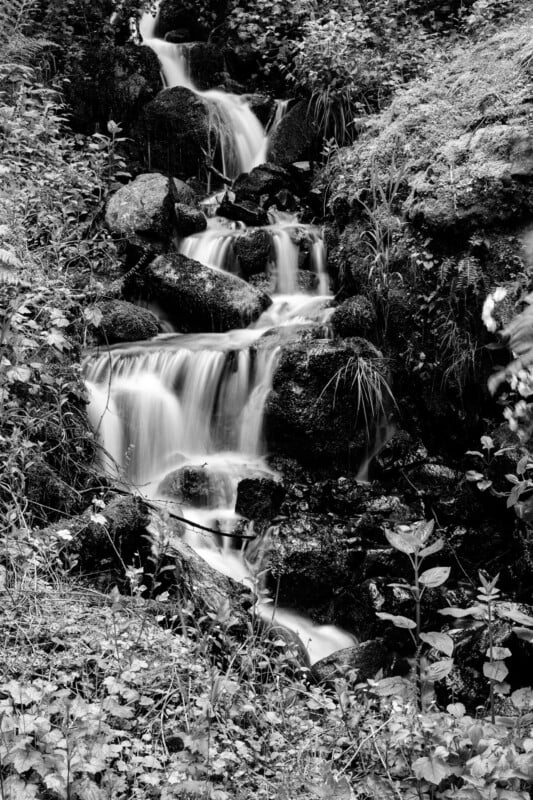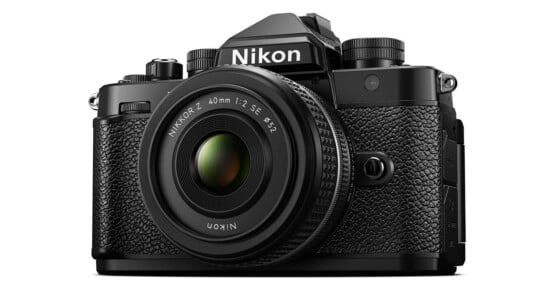Nikon Z6 III Initial Review: A Middleweight Fighter With Heavyweight Dreams
Nikon’s Z6 III brings a lot of technologies to the table and packages them into a camera that seems purpose-built to win the $2,500, mid-range, full-frame camera fight. It may be priced to compete with the middle of the camera pack, but it’s swinging punches like a flagship.
When I played with the Nikon Zf last year, I noticed that the camera had a lot of new technology for something that was meant to be a retro-inspired niche camera. In many ways, the Zf felt like a substantial improvement over the Z6 II to the point where I wondered if Nikon was going to cancel the Z6 and Z7 lines in favor of just it and the Z8. However, the Z6 II represented a great all-around camera that can fulfill many roles without breaking the bank and the ZF was indeed a niche product. So I figured there must be a Z6 III around the corner.
Cut to June of 2024 and the new Z6 III has been announced. Nikon was kind enough to give Jordan and me an advanced opportunity to try out the latest camera and they flew us out to Portland, Oregon to see it. Portland also happens to be the hometown of our editor-in-chief Jaron Schneider so we got to catch up and test out the latest Nikon body together.
We traveled to Astoria to see the mighty Columbia River and even to Cannon Beach to test the Nikon body — the irony was not lost on us. We also hit up the Japanese Gardens in Portland and caught a practice session with the Major League Soccer Portland Timbers to really test all the features of the camera. Although it was pre-production, the Z6 III we tested was very close to the final version so I got to have a substantive first look.


Nikon Z6 III: A Very Familiar Handling Experience
If it ain’t broke, don’t fix it. The Z6 III feels immediately familiar to anyone who has handled a Z6 or Z7 and that’s a good thing because the Z6 III benefits from some hard-won lessons and improvements to provide a versatile and customizable camera with a very secure and comfortable feel. The AF-ON button, autofocusing joystick, and selector switch for photos or video are all easy to manipulate and give the control that advanced photographers appreciate. The body is rugged and sealed against the elements to the same degree as the Nikon Z8 but it’s a little lighter at 25.5 ounces (725 grams). There are plenty of customizable buttons and the grip is deep and comfortable. It’s hard to fault the camera body design because it seems to be thoughtfully laid out, and most importantly, nothing has been held back or taken away despite the camera being a lower price than the Z8 or Z9.


One of the noteworthy bits of tech that was launched on the Zf finds its way to the Z6 III: the new IBIS unit promises up to eight stops of stabilization and will adjust the sensor for subjects that are off-center in your images. Wherever the AF point is locked, the camera will adjust specifically and this has proven to be a very effective solution for getting sharp shots no matter where your subject is.


Even though the Z6 III is a slightly smaller package in Nikon’s lineup, we are not missing out on any major ports. There is a headphone jack and mic jack as well as a full-size HDMI port. We don’t get the dual USB-C ports like the Z8 has but the camera can of course be charged and connected via its single USB-C port. There is also a dedicated cable release port to work with the affordable Nikon MC-DC2 unit. The Z6 III uses both a high-speed UHS-II SD card slot as well as CFExpress Type B cards, so you have a solution for fast burst rate shooting as well as a backup. The battery is the venerable EN-EL15C battery which is shared amongst many of the latest Nikon bodies. You can still use some of the older EN-EL15 batteries just like with the Z8 at the expense of some battery life and only the B and C versions will charge in camera.


Nikon Z6 III: A Big Upgrade Where We Didn’t Expect It
Everybody expected the Z6 III to cut costs by having the same old 3.69-million dot EVF that we’ve seen before. What a surprise then to look into a glorious 5.76-million dot EVF which also happens to have minimal latency and a fast 120hz refresh rate. I really enjoyed using the new EVF for the soccer matches and found it able to keep up with the action without hindering me. It also has an insane 4,000-nit peak brightness which, frankly, is way too bright for most situations in my opinion. But thanks to it, the EVF does support a full HDR color space. After some easy adjustments, I had the EVF brightness calibrated and soon found that it was one of the biggest upgrades in this line of cameras. The back panel is a perfectly acceptable 2.1-million dot display with full articulation that should please landscape photographers and videographers alike.


Nikon Z6 III: A New Sensor We’ve Never Seen Before
I’ve heard of stacked sensors and BSI sensors, but the Z6 III features the first partially stacked sensor I’ve ever used. The idea is simple: Using some elements of a fully-stacked sensor can give a compromise that enhances performance without the steep price to go with it.
The half-stacked sensor reads out faster than the older Z6 II but retains its 24-megapixel resolution. This allows for faster burst speeds and a somewhat lower rolling shutter value than the older sensor without going to the incredibly high-speed, high-cost Z8 stacked chip. There is a mechanical shutter in the Z6 III too, which can push up to 14 frames per second with continuous autofocus and the faster reading sensor does allow for the electronic shutter to sync with flashes at 1/60 of a second and give burst rates up to 20 frames per second and still shoot RAW images. You can push up to 60 frames per second in JPEG-only mode or 120 frames per second with a 1.5x crop factor. The RAW images out of the Z6 III also maintain 14-bit quality without dropping down to 12-bit to provide those faster burst speeds.



Although the Nikon Z6 III uses the latest autofocusing algorithms, the partially stacked sensor won’t give quite the same performance as we’ve seen in the Z8 and Z9. You can expect it to be a little less sticky when tracking subjects and functionality such as the dedicated bird detection has been folded into general animal detection instead. That being said, performance is a definitive improvement over the older Z6 and Z7 bodies and I found the 3D tracking to work very effectively when tracking Portland Timbers soccer players.
I found the face and eye detection to be working at long distances and of course, the behavior of the autofocus can be customized depending on the situation. I think many wildlife, journalism, and sports photographers will find the Z6 III to be an effective tool when they need to land critical action shots. The Z6 III can even autofocus in extremely low levels of light: it is rated to focus at -10EV with an f/1.2 lens and from the testing we did at night on the streets of Portland, I can attest that this is accurate.



24 megapixels is still considered par for the course in an all-round full-frame camera although older cameras like the Sony A7 IV surpass it. Image quality isn’t something we can fully test yet but I expect the results to be very predictable to what we’ve seen from the Nikon Z6 II, for example. If you need more resolution, the Z6 III now supports a multi-shot high-resolution mode. Stacking up to 32 images allows the Z6 III to create 96-megapixel images which does have a noticeable advantage in detail and dynamic range. Unfortunately, the shots must be taken on a tripod and there is no way to create the images in camera — you have to use the NX Studio desktop software to compile them. This is not convenient and something that I have criticized Sony for ad nauseam, so we can’t let Nikon off the hook here either.



Nikon Z6 III: It Doesn’t Just Take Photos
The Z6 III carries on the tradition that the Z6 series had as a hybrid photo/video platform but it also borrows a lot of high-end features from the Nikon Z8 as well. The video autofocus performance is improved and the Z6 III can now shoot internal RAW video as well as advanced ProRes record modes. Internal RAW recording is a big coup for Nikon and currently, only the Panasonic GH7 can match this at a similar price. You can use Nikon’s proprietary NRAW format or shoot ProRes RAW depending on which editing software you prefer. It also has advanced assist tools such as waveforms and while the fully articulating screen might not be a photographer’s first choice, it makes more sense on a hybrid camera. The new EVF is also a pleasure to use for video work and provides enough detail to accurately manually focus without magnifying the display.


The partially-stacked sensor now allows the recording of over-sampled 4K footage up to 60 frames per second. 4K at 120 frames per second is quite sharp although it does apply a 1.5x crop factor. The Z6 III can push to 1080p240 if you need even slower motion. The 24-megapixel sensor can’t deliver any 8K recording but you can push it up to 5.4K recording at a somewhat more limited 16:9 aspect ratio.
The Z6 III proved itself to be a capable video camera and the only real features missing are open gate recording and shutter angle control. The IBIS unit did a good job at controlling camera shake, especially when walking or moving the camera with a subject. The autofocus performance in video was surprisingly effective at tracking fast movement and adjusting for it as well, although — weirdly — it did sometimes drift with locked-off shots where the camera should have no problem maintaining correct focus.
Still, the Z6 III really shines as a hybrid camera in today’s market because it offers a good compromise between sensor read-out speed and resolution and has most of the important tools and record modes to please advanced videographers.
The Z6 III is the Modern Mirrorless D750
I struggled to find a major fault with the Z6 III because Nikon has purposefully created a camera that will win both the hearts of potential buyers and some healthy market share as well. The addition of a new faster sensor, better EVF, advanced IBIS, and high-grade video features, makes the Z6 III a compelling camera with some technology that isn’t even available in higher-end models. This is in stark contrast to the typical hand-me-down nature of most camera companies’ strategies and we aren’t seeing features being omitted or disabled to maintain some perceived market segmentation.
The $2,500 Nikon Z6 III simply represents a major upgrade at a reasonable price and it’s hard not to respect a camera when it can do that. It is most certainly the spiritual successor to the D750, a camera that was capable enough for most situations and earned the respect of photographers whether they shot Nikon or not. I think the Z6 III will fulfill exactly this role for Nikon again and it is going to be a win for both Nikon and its users.



